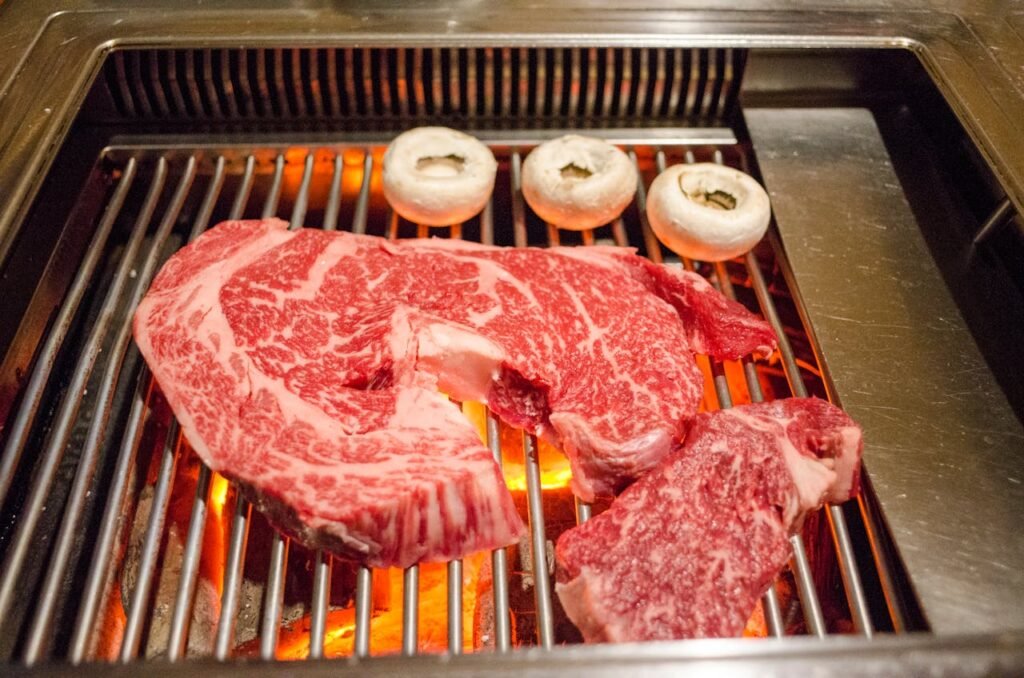A Scientific Comparison
The debate between grass-fed and conventional (grain-fed) beef involves several dimensions, including nutritional content, environmental impact, and ethical considerations. Understanding these differences helps consumers make informed decisions based on their health goals and values.
1. Nutritional Composition
The nutritional profile of grass-fed and grain-fed beef varies significantly, primarily due to differences in the animals’ diets.
- Omega-3 Fatty Acids: Grass-fed beef is higher in omega-3 fatty acids, which are essential for heart health, brain function, and reducing inflammation. Omega-3s in grass-fed beef primarily come from alpha-linolenic acid (ALA), which is found in the grass and other forage. Research suggests that grass-fed beef can have up to five times more omega-3s than grain-fed beef【6†source】【8†source】.
- CLA (Conjugated Linoleic Acid): Grass-fed beef is also richer in conjugated linoleic acid (CLA), a fatty acid that has been associated with reduced body fat and potential anti-cancer properties. Studies have shown that grass-fed beef contains 2 to 3 times more CLA than grain-fed beef【6†source】.
- Antioxidants and Vitamins: Grass-fed beef generally contains higher levels of antioxidants, such as vitamin E, and other nutrients like beta-carotene, which can contribute to better overall health. These compounds are more abundant in the grass and plants that grass-fed cattle consume【7†source】.
- Saturated Fat and Cholesterol: The fat profile differs between the two types of beef. Grass-fed beef tends to have a leaner profile with less total fat, while grain-fed beef can have higher levels of saturated fats. However, both types of beef have similar cholesterol levels.
2. Environmental Impact
The environmental footprint of beef production is a complex issue, often at the center of the grass-fed vs. grain-fed debate.
- Carbon Emissions: Grass-fed cattle are often criticized for having higher methane emissions per pound of beef produced compared to grain-fed cattle. This is because grass-fed cattle tend to take longer to reach market weight, extending their methane production period【7†source】. However, advocates argue that grass-fed beef can be produced more sustainably through rotational grazing practices that enhance soil health and carbon sequestration.
- Land Use: Grass-fed cattle require more land per animal, as they need pastures for grazing. This can be a disadvantage in regions where land is limited, but proponents suggest that grass-fed beef can contribute to biodiversity and land restoration【7†source】.
- Water Use: Grass-fed beef may have lower water requirements overall, especially if cattle are raised on rain-fed pastures, reducing the need for irrigation compared to the water-intensive production of grains used in feedlots.
3. Animal Welfare and Ethical Considerations
Grass-fed beef is often considered more humane because cattle are allowed to graze on pastures, engaging in natural behaviors. In contrast, conventional beef production frequently involves confinement in feedlots, where animals are fed a grain-based diet, often supplemented with soy and corn, which can cause digestive issues for cattle.
Moreover, the use of antibiotics and growth hormones is more prevalent in conventional beef production. These practices raise concerns about antibiotic resistance and the potential health risks of hormone residues in meat. Grass-fed beef, especially when certified organic, typically avoids the use of these substances, leading to a cleaner product【7†source】【8†source】.
4. Flavor and Culinary Differences
Many consumers report that grass-fed beef has a distinct flavor profile compared to conventional beef. Grass-fed beef often has a stronger, more “earthy” or “gamey” taste, which some people prefer, while others find grain-fed beef’s milder flavor more appealing. The leanness of grass-fed beef can also affect cooking methods, as it is more prone to drying out and requires careful preparation to maintain tenderness【6†source】.
Conclusion
The choice between grass-fed and conventional beef involves a trade-off between health benefits, environmental impact, and personal values. Grass-fed beef offers a higher content of beneficial omega-3 fatty acids, CLA, and antioxidants, but it also comes with challenges related to cost, land use, and methane emissions. Conventional beef, while often more affordable and widely available, may raise concerns about animal welfare, antibiotic use, and lower nutritional density.
As research continues to explore the long-term effects of these different farming practices on health and the environment, consumers must weigh these factors based on their individual priorities and access to high-quality sources.


